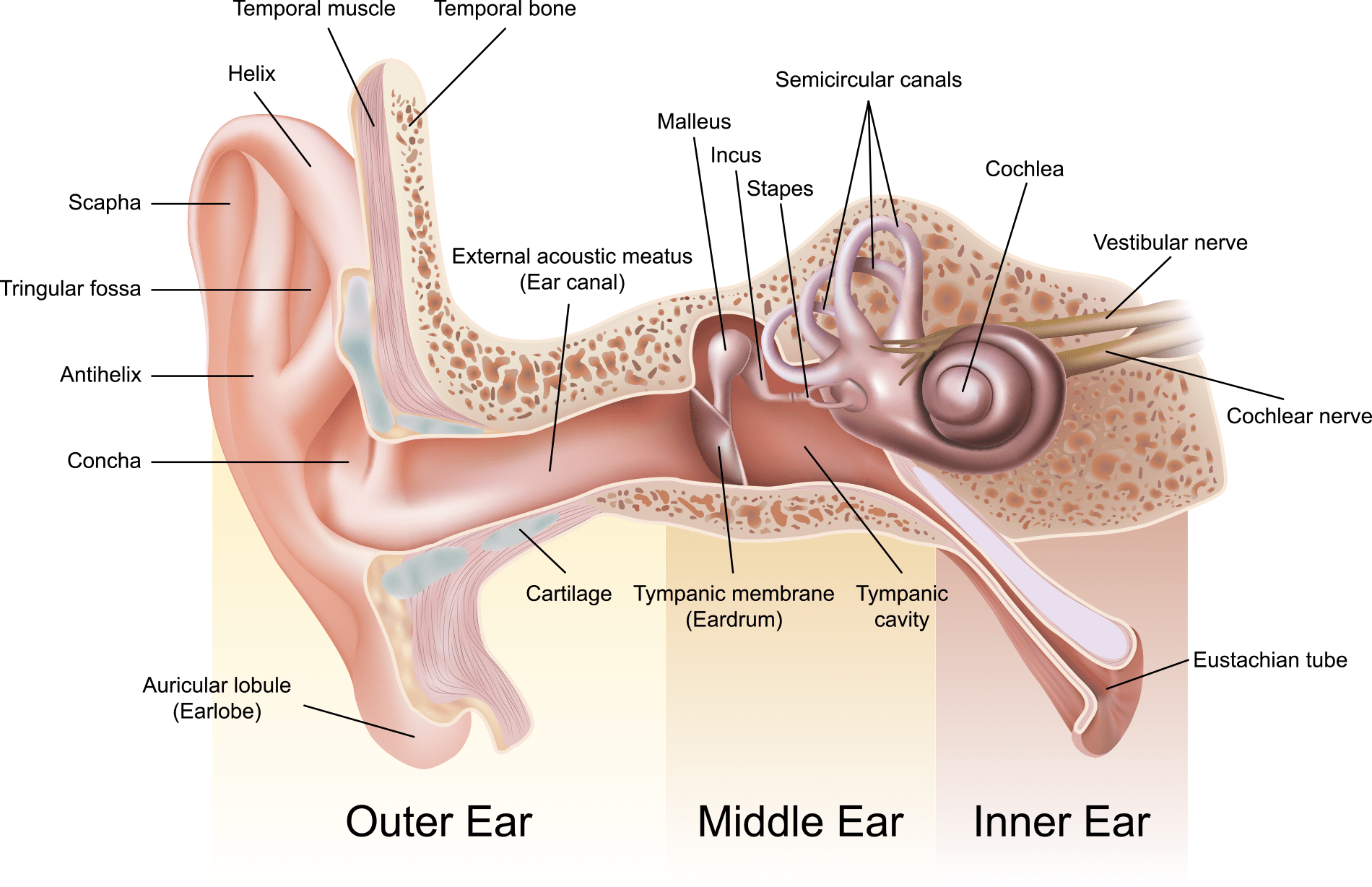Did you know there is more than one type of hearing loss? Changes to different parts of the hearing system will result in one of three types of hearing loss: sensorineural, conductive, or mixed.

Sensorineural Hearing Loss
Sensorineural hearing loss (SNHL) results from changes in the inner ear (cochlea) and/or the auditory nerve (pathway) from the inner ear to the auditory cortex of the brain. More often than not, these changes cause permanent hearing loss that is not treatable with medicine or surgery. Some of the known causes of SNHL include the following: age, noise exposure, genetics, malformations of the inner ear, benign tumor, illnesses, medications known to be toxic to the ear, and injury/trauma. Hearing aids are a common solution used to assist with this type of hearing loss.
Conductive Hearing Loss
Conductive hearing loss (CHL) results from changes in the outer ear and/or middle ear. With a CHL, sound is not able to travel (be conducted) efficiently down the ear canal, through the eardrum, and along the ossicles (middle ear bones). Some of the more common causes of CHL include the following: fluid in the middle ear, ear infection in either the outer and/or middle ear space, allergies, a hole in the eardrum, ear wax (cerumen) blockage, benign tumor, a foreign object in the ear canal, and the absence or malformation of the outer and/or middle ear. This type of hearing loss is often corrected with medical management or surgery. In some cases, hearing aids may be recommended.
Mixed Hearing Loss
Mixed hearing loss (MHL) results from the presence of both a SNHL and CHL at the same time. For example, a person with noise-induced SNHL may get a head cold that causes fluid in the middle ear. During the time the fluid is present, a CHL is occurring in addition to the already present SNHL. Sometimes MHL can improve with medical management, while other times, it is permanent.
How is Hearing Impairment Diagnosed?
Hearing loss is diagnosed with a battery of tests that determines how soft you can hear and how well sound travels through the auditory system. The test battery may include, but is not limited to audiometry, tympanometry, acoustic reflex thresholds, speech-in-noise testing, and otoacoustic emissions. Typically, the audiologist completes the testing in a sound booth or sound treated room. Some tests require you to sit quietly while others require your participation. The audiologist will be able to determine if you have hearing loss and if so, the type and degree of hearing loss on the day of your evaluation.

